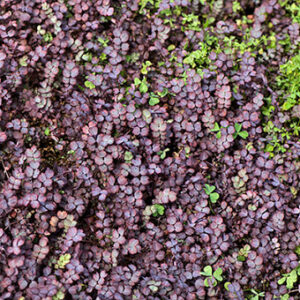Euphorbia Redwing Charam
£20.00
Frequently Bought Together



Description
Quick Facts
- Common Name: Martin’s Spurge, Redwing Euphorbia
- Botanical Name: Euphorbia × martini ‘Redwing’ (syn. ‘Charam’)
- Plant Type: Evergreen perennial
- Mature Height: 60-80cm
- Mature Spread: 60-80cm
- Flowering Period: March to June
- Flower Colour: Lime-yellow bracts with red centres
- Foliage: Dark green leaves with striking red midribs and stems
- Hardiness: RHS H5 (fully hardy)
- Soil Requirements: Well-drained, tolerates poor soil
- Aspect: Full sun to partial shade
- Maintenance: Low
Description
Discover the dramatic beauty of Euphorbia ‘Redwing’, an exceptional architectural perennial that brings year-round colour and contemporary elegance to your garden with its striking red-stemmed foliage and luminous spring flowers. This outstanding cultivar offers a spectacular combination of dark green leaves adorned with vivid red midribs and stems that create constant visual interest, transforming into a breathtaking display when topped with chartreuse-yellow flower bracts that seem to glow against the burgundy tones beneath.
From early spring through early summer, this captivating plant produces abundant dome-shaped clusters of lime-yellow bracts surrounding tiny flowers with distinctive red centres, creating a stunning two-toned effect that captures attention from across the garden. The architectural mounds of narrow, lance-shaped leaves provide elegant structure throughout the year, whilst the red-flushed stems and leaf midribs intensify in colour during cooler months, offering exceptional winter interest. The naturally rounded, bushy habit creates bold presence without overwhelming neighbouring plants.
Named for its distinctive red-winged appearance, this hybrid spurge combines the best qualities of its parents—the architectural presence of Euphorbia characias with the compact habit and hardiness of Euphorbia amygdaloides. Perfectly suited to British conditions, ‘Redwing’ thrives in our temperate climate, tolerating both sun and partial shade whilst asking for minimal care, making this an exceptional choice for contemporary and naturalistic gardens alike.
Create stunning architectural compositions by pairing this bold beauty with ornamental grasses, sedums, and silver-leaved artemisias for textural contrast, or combine with purple-leaved heucheras, bronze fennel, and dark-leaved dahlias for dramatic colour harmonies. Magnificent in gravel gardens, contemporary borders, or Mediterranean-inspired plantings where its drought tolerance and year-round presence will bring structure, colour, and sophisticated beauty to your garden sanctuary.
Caragh Garden Notebook
Planting: Space plants 60-80cm apart in full sun to partial shade with excellent drainage. Plant in spring or autumn. Dig holes the same depth as the root ball and incorporate horticultural grit on heavy soils—avoid adding rich organic matter as euphorbias thrive in lean conditions. Position in well-drained spots, ideally on slopes or in raised beds. Water in thoroughly but sparingly thereafter.
Soil Preparation: Thrives in well-drained to dry soil with pH 6.0-8.0. Prefers lean, gritty conditions and tolerates poor, stony soils. In heavy clay, incorporate generous amounts of horticultural grit and sharp sand, or plant in raised beds. Excellent drainage is essential—avoid rich, moisture-retentive soils which can cause lush growth prone to flopping and reduce winter hardiness. Tolerates alkaline conditions and coastal exposure.
Container Growing: Suitable for containers using very free-draining compost (mix soil-based compost with 30-40% horticultural grit). Choose pots minimum 40cm diameter with excellent drainage holes. Water sparingly, allowing compost to dry between waterings. Feed once in spring with slow-release balanced fertiliser—avoid overfeeding which reduces colour intensity. Repot every 2-3 years in spring.
Seasonal Care: Cut back flowered stems to the base in late summer after flowering to maintain compact habit and encourage fresh basal growth. Wear gloves as the milky sap can irritate skin and eyes. Remove any dead or damaged stems in early spring. Requires no feeding on most soils—lean conditions produce the best colour. Drought-tolerant once established. Self-seeds moderately—remove seedheads if unwanted or allow to naturalise.
Propagation: Take basal cuttings in spring using gloves to protect from irritant sap. Allow cut ends to dry for a few hours before inserting into very gritty compost. Keep just moist with good ventilation. Rooting takes 4-6 weeks. Alternatively, divide established clumps carefully in spring, though plants dislike disturbance. Self-sown seedlings may not come true to type.
Additional information
| Pot Size |
|---|





